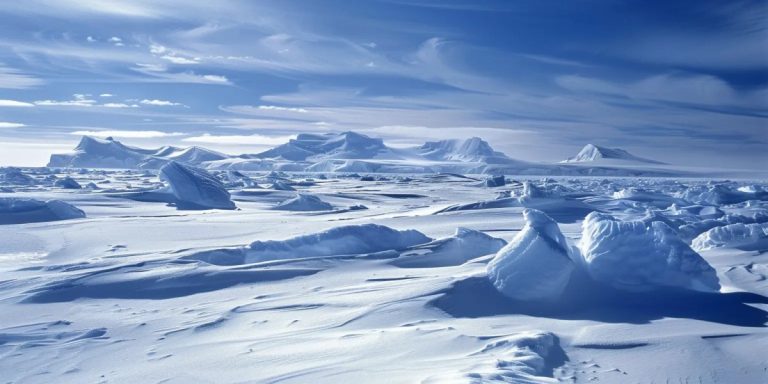
Various mainstream media outlets claim that Antarctica is burning and experiencing unusually hot temperatures due to climate change, citing a recent study as the source of their reports. These stories distort research findings and scientific evidence. The peer-reviewed paper cited in the headlines clearly states that short-term weather events are the cause, not climate change. Furthermore, contrary to media claims, there was no “heat wave” as the official meteorological criteria for calling the event a heat wave were not met.
The picture above is the title of Science and Technology Daily: Earth's last frontier burned: Record-breaking heat hits Antarctica in winter. elsewhere, economic times weigh with Record heat wave in Antarctica: Threat to global sea levels and ice integrity, When CNN Speaks Out 'Stunning' Antarctic heatwave pushes temperatures up to 50 degrees above normal.
First, let's disprove the obvious. As the Science Daily headline photo above makes clear, despite claims that “the continent is on fire,” nothing is burning in Antarctica.
Science and Technology Daily said this:
In March 2022, the most intense heat wave ever recorded on Earth hit Antarctica, just as creatures in the southern region prepared for the long and harsh winter ahead. The extreme weather has pushed temperatures more than 70 degrees Fahrenheit above average in parts of Antarctica, causing glaciers and snow to melt even in the McMurdo Dry Valleys, one of the coldest and driest regions on Earth.
To put that paragraph and these titles into perspective, we turn to the National Oceanic and Atmospheric Administration's (NOAA) definition of a heat wave:
A heat wave is a period of unusually hot weather that usually lasts two days or more. To be considered a heat wave, temperatures must exceed the historical average for a given area.
While temperatures in Antarctica were actually cooler than normal during the one-day weather event, the temperatures only briefly rose above freezing, so there was no measurable melting. It would be a mistake to label such events a “heat wave”.
“On March 18, 2022, record high temperatures were recorded in Antarctica's McMurdo Dry Valleys, nearly 30°C above the average for the day,” the newspaper, citing the source of its shocking headline, said.
Additionally, they provide data in the form of Figure 1 showing temperatures at several locations in Antarctica:

As can be seen from the temperature map on the right side of panel (b), in March 2022, there were some brief temperature peaks (red circles) during the day, with the freezing point temperature of 0°C (32°F) approaching or Exceed. Temperatures in the area returned to normal immediately thereafter.
Therefore, in the context of the NOAA heat wave definition above, the two-day minimum standard is not met, so calling a brief temperature spike a “heat wave” is either wrong or fake news.
The peer-reviewed paper said the incident was caused by, “[a]In March 2022, atmospheric rivers caused extreme weather in the Antarctic Dry Valleys, with temperatures 25°C higher than average. Even the title of the peer-reviewed paper, “Terrestrial Polar Ecosystem Responses to Antarctic Weather Anomalies in March 2022,” refers to it as Abnormal weather.
A single-day weather event that briefly causes above-normal temperatures does not meet the meteorological definition of a heat wave nor is it a signal of climate change because it does not represent the continent's 30-year long-term temperature trend.
Despite these scientific facts, mainstream media reporting on the event described it differently:[a] “Threats to global sea levels and ice integrity”, “alarming heat waves” and “the burning Antarctic continent” in the eyes of the media.
In the words of CNN, the degree of exaggeration is amazing.
The “news coverage” of this study and the weather anomalies it discusses is typical of media organizations who blame every weather event even slightly outside of normal limits for how short a time it is due to climate change – even if the basic research doesn’t find this kind of connection. Weather is not climate. They operate on completely different time scales.
This kind of reporting is unprofessional and a disgusting disservice to the public. The media should provide information to the public rather than mislead and indoctrinate.

Anthony Watts
Anthony Watts is a senior fellow in environment and climate at the Heartland Institute. Since 1978, Watts has been in the weather business both in front of and behind the camera as a live television meteorologist and currently oversees daily broadcast forecasts. He created television weather graphics presentation systems, professional weather instruments, and co-authored peer-reviewed papers on climate issues. He runs the world's most viewed climate website, the award-winning wattsupwiththat.com.
Originally published in Climaterealism
Relevant
